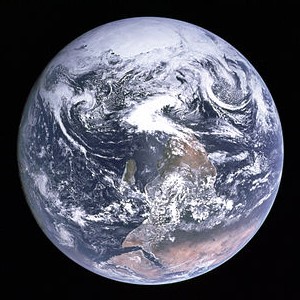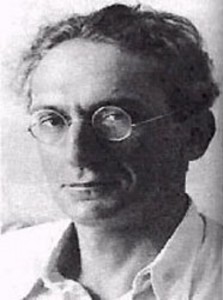 There are good reasons to think that Earth has turned over on various occasions. But who can be surprised that this perception—so removed from everyday experience—seems less than instantaneously persuasive?
There are good reasons to think that Earth has turned over on various occasions. But who can be surprised that this perception—so removed from everyday experience—seems less than instantaneously persuasive?
The good reasons include telling evidence in narrative testimony and correctly interpreted myths of the ancients, embedded patterns in ancient cultures that give evidence of inversions, and the insights and arguments of two formidable researchers. Now we can: add new reasons that strengthen the case; specify the very approximate dates of four inversions; extend the theory to the five great mass extinctions of prehistory; comprehend that Earth is actually prone to inversion; and point to where to find more evidence. Understanding inversions helps us correct errors in interpreting past planetary and Earth science while providing clues relevant to climate change.
Ancient Sources and Velikovsky
Herodotus wrote that Egyptian priests had told him that four times since Egypt became a kingdom “the Sun rose contrary to his wont; twice he rose where he now sets, and twice he set where he now rises.” The Egyptians had a name for the Sun when it rose in the west, “Re-Horakhty”.12 The concept of the Sun rising in the west occurs in both Christian and Muslim literature. There were also accounts of stars reversing the direction of rising, while various texts talk of north becoming south at a time of chaos. This reversal appears in Greek literature, too, most notably in the Statesman of Plato.
This evidence, and much else, was interpreted by Immanuel Velikovsky in his Worlds in Collision (1950) in connection with his theory that Venus had emerged from Jupiter and repeatedly approached Earth during the Bronze Age. New evidence and reinterpretation show that Venus did not emerge from Jupiter but was rather pulled by Jupiter’s immense gravity from outer space. Turned into a molten, oval comet by tidal heating as it passed Jupiter, Venus headed into the inner solar system. It approached Earth every 52 years, causing catastrophes. On three occasions Venus came close enough to cause super-catastrophes; on a fourth occasion Venus interacted with Mars, impelling Mars toward Earth, and that caused a super-catastrophe. It was during such particularly close approaches that Earth turned over. Velikovsky ascribed this to electromagnetic forces, but gravitational interaction seems a more likely primary cause, though electromagnetism may have played a secondary role.
emerged from Jupiter and repeatedly approached Earth during the Bronze Age. New evidence and reinterpretation show that Venus did not emerge from Jupiter but was rather pulled by Jupiter’s immense gravity from outer space. Turned into a molten, oval comet by tidal heating as it passed Jupiter, Venus headed into the inner solar system. It approached Earth every 52 years, causing catastrophes. On three occasions Venus came close enough to cause super-catastrophes; on a fourth occasion Venus interacted with Mars, impelling Mars toward Earth, and that caused a super-catastrophe. It was during such particularly close approaches that Earth turned over. Velikovsky ascribed this to electromagnetic forces, but gravitational interaction seems a more likely primary cause, though electromagnetism may have played a secondary role.
In addition to ancient testimony, in his Worlds in Collision (New York: Doubleday, 1950) Velikovsky cited further evidence of reversals. The Chinese zodiac is retrograde. The name Arab derives from the word for the setting of the sun, so that that the Arabs, as seen from the Levant, were the people of the setting sun. Egyptian administrator Senenmut had one of the two ceiling panels of his tomb painted with a retrograde stellar array and one with a prograde array, fitting a sky that had inverted. In other words, the evidence goes beyond written narratives and rather easy-to-interpret myths, which some observers (ignorantly) dismiss as fanciful or hard to interpret. It also is too plentiful and fitting to be outweighed by exaggerated counterfactual objections, e.g., that such an inversion would create a colossal flooding of Earth’s entire landmass, for which there is no evidence. In fact, there is plenty of evidence of lesser but still gigantic tsunamis that were evidently set off by inversions that took place over ten days, thereby mitigating the inertial effect that a more rapid inversion would have had on the oceans.
Thus the first two stages of the Reversing Earth theory—the ancient sources and Immanuel Velikovsky—provided plenty of reasons to think that Earth had inverted in a very specific pattern. Still, Velikovsky did not offer an adequate scientific mechanism for the inversions.
The Theory’s Third Stage
In a third stage  of development, British physicist Peter Warlow devised an explanation of the mechanism of inversion. Warlow argued that Earth resembled a kind of top termed a tippe top, which would turn itself over when sufficient torque was applied to its axis. But when Warlow published his hypothesis in a scientific journal, his methods and conclusions were criticized in an apparently devastating manner.13 Faulting Warlow’s mathematics, his critic, Victor J. Slabinski, wrote that the required torque to cause an inversion of Earth would have to come from a body at least 417 times the mass of Earth, among other objections. This criticism obliged Warlow to rethink his arguments. Eventually he published a book entitled The Reversing Earth14 that provided a more persuasive explanation.
of development, British physicist Peter Warlow devised an explanation of the mechanism of inversion. Warlow argued that Earth resembled a kind of top termed a tippe top, which would turn itself over when sufficient torque was applied to its axis. But when Warlow published his hypothesis in a scientific journal, his methods and conclusions were criticized in an apparently devastating manner.13 Faulting Warlow’s mathematics, his critic, Victor J. Slabinski, wrote that the required torque to cause an inversion of Earth would have to come from a body at least 417 times the mass of Earth, among other objections. This criticism obliged Warlow to rethink his arguments. Eventually he published a book entitled The Reversing Earth14 that provided a more persuasive explanation.
Warlow argued that we need to separate the spin of Earth from its body. In a tippe top model, upon the approach of a planet like Venus or Mars, even as the spin continued with only a small diminution, a modest torque would set off a fast precession of the body whereby the body would invert 180 degrees in several stages in as little as a day or two.
Warlow further contended that there was no such thing as a geomagnetic reversal. Attached to Earth’s spin, the geomagnetic field would remain pointed in the same direction, albeit temporarily dipping to an intensity of perhaps 15 percent. He claimed to find evidence for such reversed magnetism in the geological record, but over time it became clear that there was only a little evidence for magnetic reversals during the crucial Bronze Age catastrophes. In fact, we now know that the geomagnetic field is connected to Earth’s body, not its spin. The center of the field is located at 25ºN, 153ºE in the direction of the northwest Pacific, and it has been approximately in this position for hundreds of millions of years.15 Thus it is somehow connected to the solid body of Earth, and during an inversion it would invert along with the body. Therefore, magnetic reversals are a different phenomenon, not linked to inversions of Earth.
Curiously, the demise of Warlow’s magnetic reversal hypothesis (that there were no magnetic reversals) actually strengthened his fast precession theory of inversions because no longer did it face the lack of evidence of magnetic reversals during the Bronze Age catastrophes (the main exception is several pieces of Etruscan and Greek pottery, perhaps the result of magnetic anomalies during spikes in the geomagnetic field associated with eras of inversion–see below). Also, we no longer have to posit thousands of inversions caused, presumably, by thousands of approaches of heavenly bodies, to match the thousands of magnetic reversals on the record.
Warlow’s book also offered rich evidence and analysis that went beyond Velikovsky, for instance, in specifying exactly how Plato included evidence of inversion drawn from tradition in his Statesman, even though Plato misunderstood it. In addition, Warlow provided an illuminating account with graphics of how humans undergoing inversion would think about it.
Stage 4
With the removal of magnetic reversals from the discussion and recognition of Warlow’s true contributions, we have entered the fourth stage of the development of the theory of inversions.
Warlow’s tippe top model can explain inversions by itself. Or some electromagnetic force, as Velikovsky argued, may have played a role as well. We can also see that, far from being a rigid, smooth, round billiard ball (which no Earth scientist believed anyway), Earth is a lopsided, unstable, wobbly spheroid that could in chaotic fashion topple over in response to a relatively minor torque.
In a more general sense, we can say that the Reversing Earth theory has also gained momentum from all of the new evidence and reinterpretation supporting the Revised Venus Theory and related theories.16 For instance, there is a new Martian Theory of Mass Extinctions, whereby the five great mass extinctions of prehistory were set off by close encounters with Mars that triggered gargantuan outpourings of lava. It is likely that the closest of these approaches of Mars also caused inversions of Earth, and these were much faster (presumably because Mars had practically struck Earth) and thus much more devastating ones than the Bronze Age inversions, which seem to have taken ten days each. Each rapid inversion would have included gigantic tsunamis that would have profoundly upturned the water column and inundated the land, which would explain better than anything else the exceptional devastation of the mass extinctions. Evidence of such tsunamis has been mistakenly attributed to bolide impacts.17 Repeated very close approaches of Mars could have caused several inversions in a row, while the rapidity and hence the destructiveness of the inversion could have been related to the closeness of approach, which would explain why the largest five mass extinctions differed in extent.
Where can we seek new evidence? Because circulation of seas and lakes changed direction relative to the shores during inversions, it might prove possible to find evidence of a switch in direction in ocean sediments and lake varves. The geomagnetic field received a boost shortly before 2500 BC and remained elevated, with particularly high spikes in the 11th and 8th centuries BC.18 This matches the approximate dates of the first approach of Venus to Earth and later approaches by Venus and Mars. The approaches of Venus, then Mars and the four inversions of Earth might have perturbed the geomagnetic dynamo in the outer core and thereby caused these anomalies. Very likely, Bronze Age archaeological sites also contain more about inversions, e.g., burial orientations. A promising area is the orientation of temples and other buildings. For instance, the original orientation of the temple of Amun-Re at Karnak aimed at the rising summer solstice Sun during the First Intermediate Period and early Middle Kingdom around 2050-1950 BC in an era when the Sun rose in the west. Then, after another inversion, New Kingdom pharaohs built chapels, windows, and even a mini-temple to view the rising winter solstice Sun in the east.
Meanwhile, the dates of Venus’ first approach and the first two inversions neatly fit the construction phases and intricate patterns of stones at Stonehenge. We now can also see that the appearance of the Earth’s shadow starting on the west of the Moon, cited as a particularly dangerous omen by the Babylonians, seems to have originated during an epoch of an inverted Earth.
In China, the myth of Archer Yi who, with his vermilion bow, shot down nine of ten suns that were making Earth too hot had a variant that the suns were sequential.19 We can see that this referred to ten successive days on which the Sun followed a different course across the sky during an inversion until Earth reached a 180° inversion and settled on the tenth sun. Archer Yi was Comet-Planet Venus. Its curving twin tails made a bow, with sunlight being blocked by Venus’ body from the central portion of its tail. The bow, directed by the solar wind, tracked the Sun as it emerged in a different location each morning. Ancient sources report the ten suns as an ill omen appearing shortly before the ends of the Xia and Shang dynasties20, and we can suppose that they appeared, perhaps partly obscured by atmospheric and planetary dust, toward the ends of the neolithic Longshan period around 2200 BC and the Western Zhou dynasty around 771 BC as well.21 While Shang was characterized in myth as eastern, the Xia dynasty was characterized as western22, and this would apply to the Western Zhou dynasty as well, i.e., Xia and Western Zhou were times when the Sun and Venus rose in the west.
The east-west pattern of Chinese dynasties supports what the Egyptian priests told Herodotus about the Sun rising twice in the west and setting twice in the east: clearly, they meant that there were four inversions. As the Aztecs put it, we now live in the age of the Fifth Sun.
Thus the various findings and theoretical explanations in Stages 3 and 4 make it increasingly difficult to deny that Earth has a built-in capacity for inversion, that it has indeed turned over upon ascertainable occasions, and that it may turn over again.
See also the video: Theory of the Reversing Earth
*****
Kenneth J. Dillon is a historical and scientific researcher. See the biosketch at About Us. The Theory of the Reversing Earth and related new theories figure in the plot of Dillon’s novel Rosemarie.


